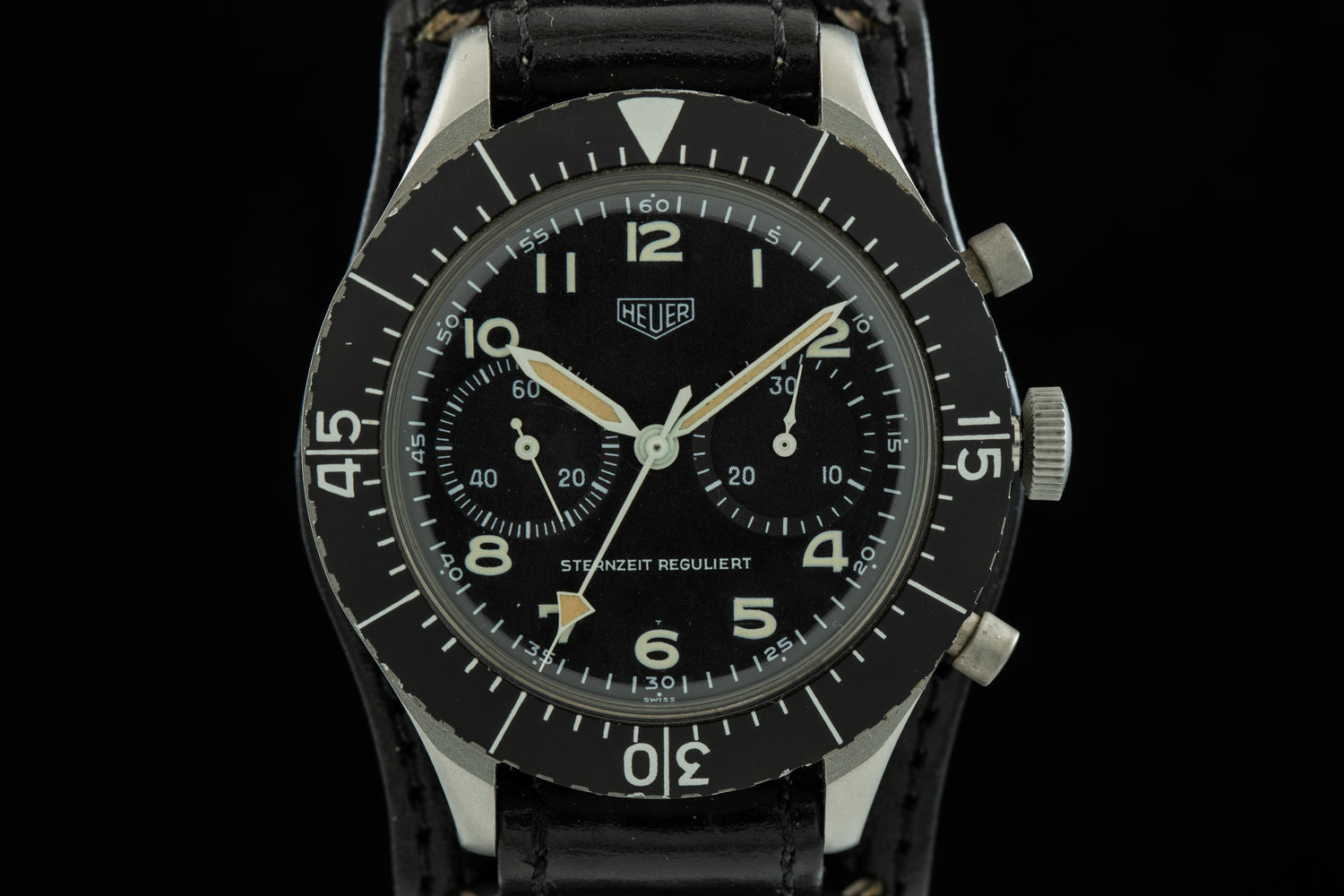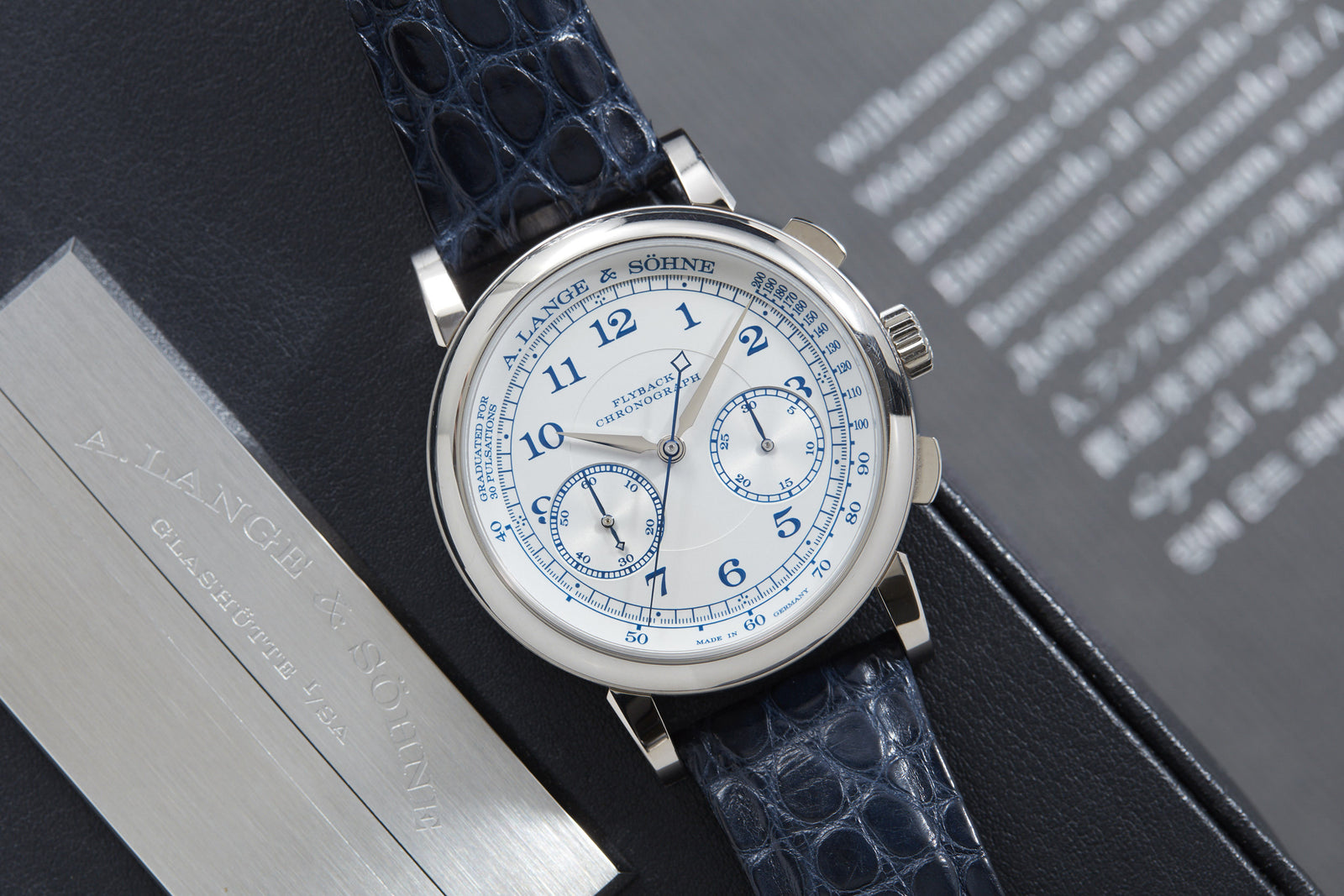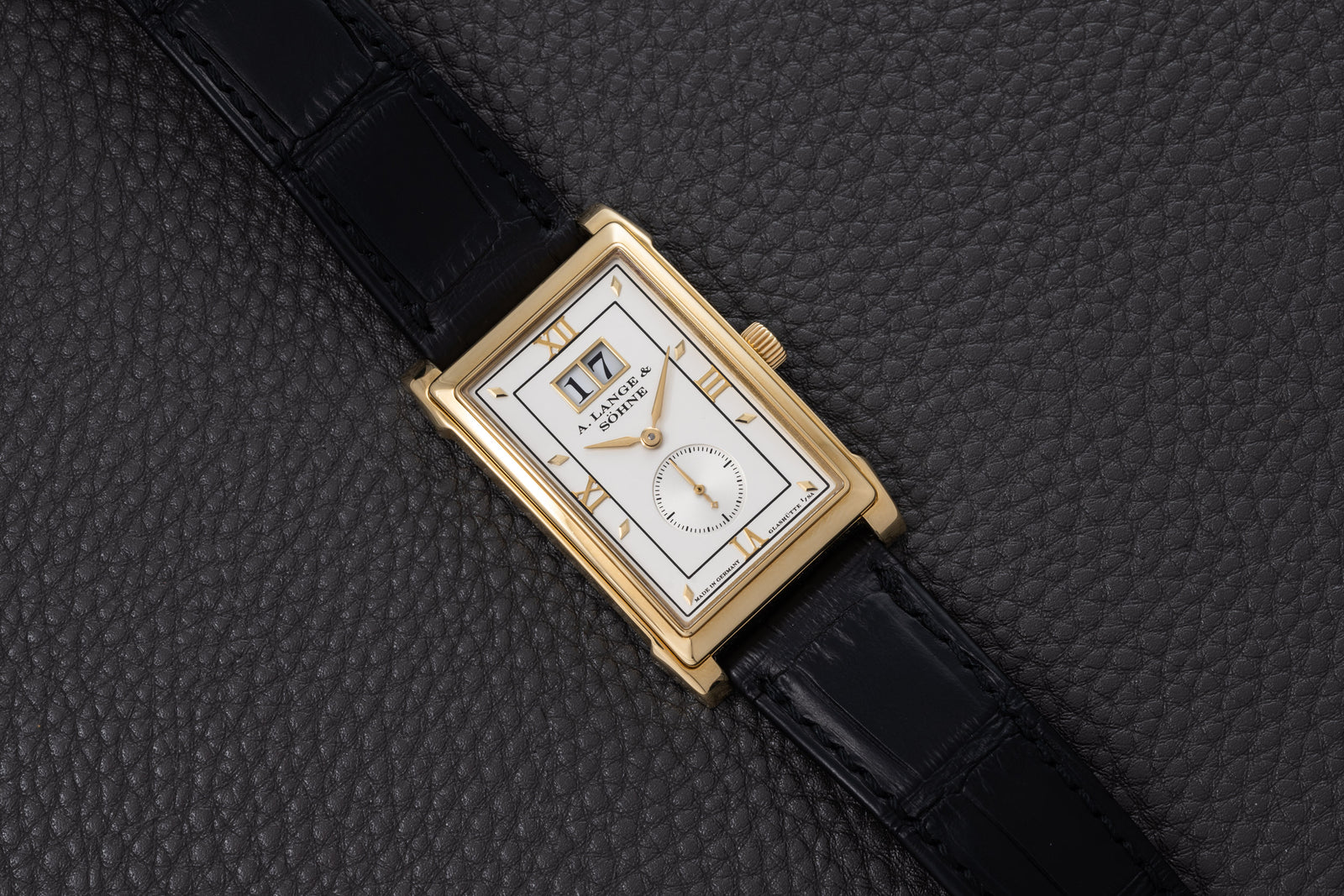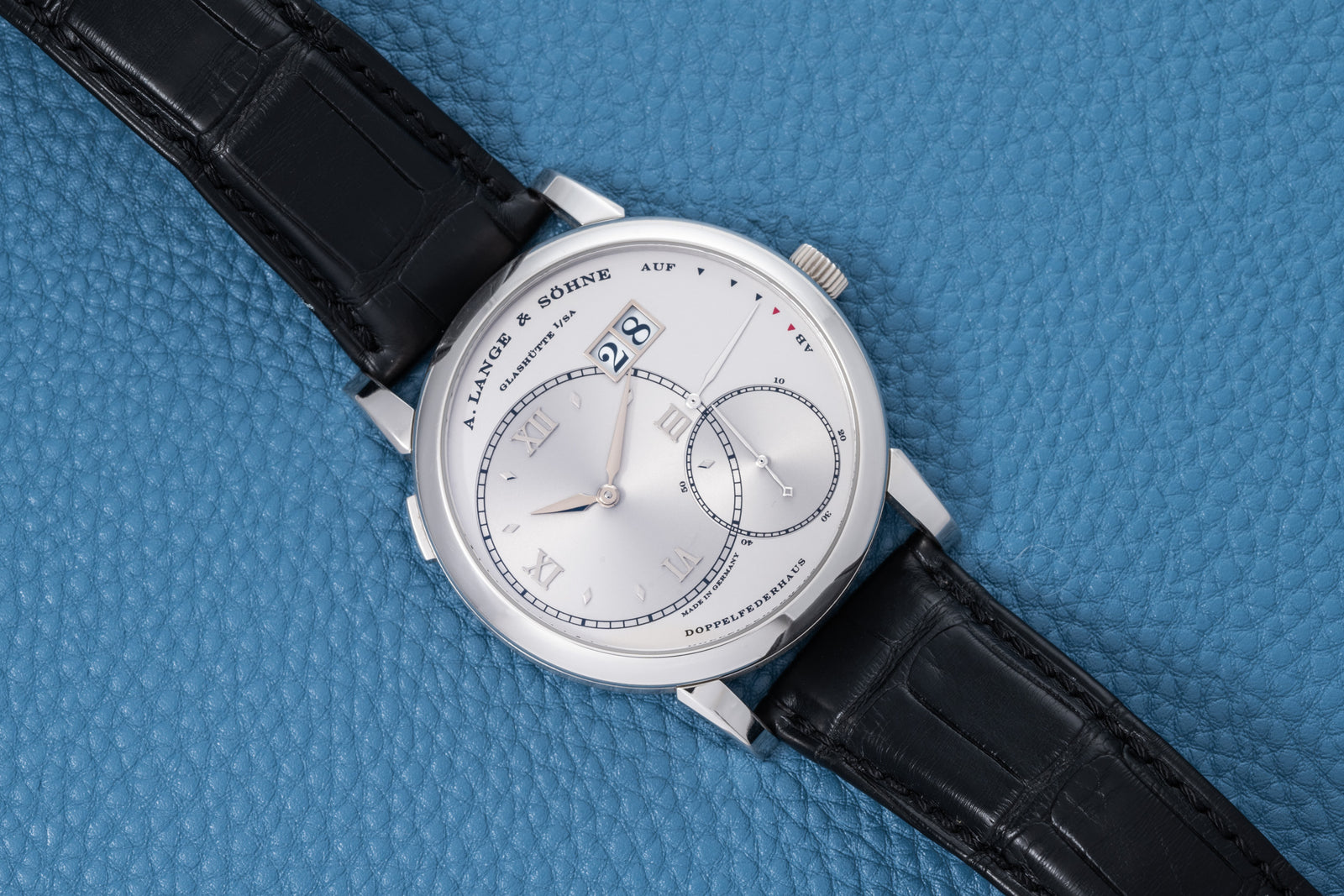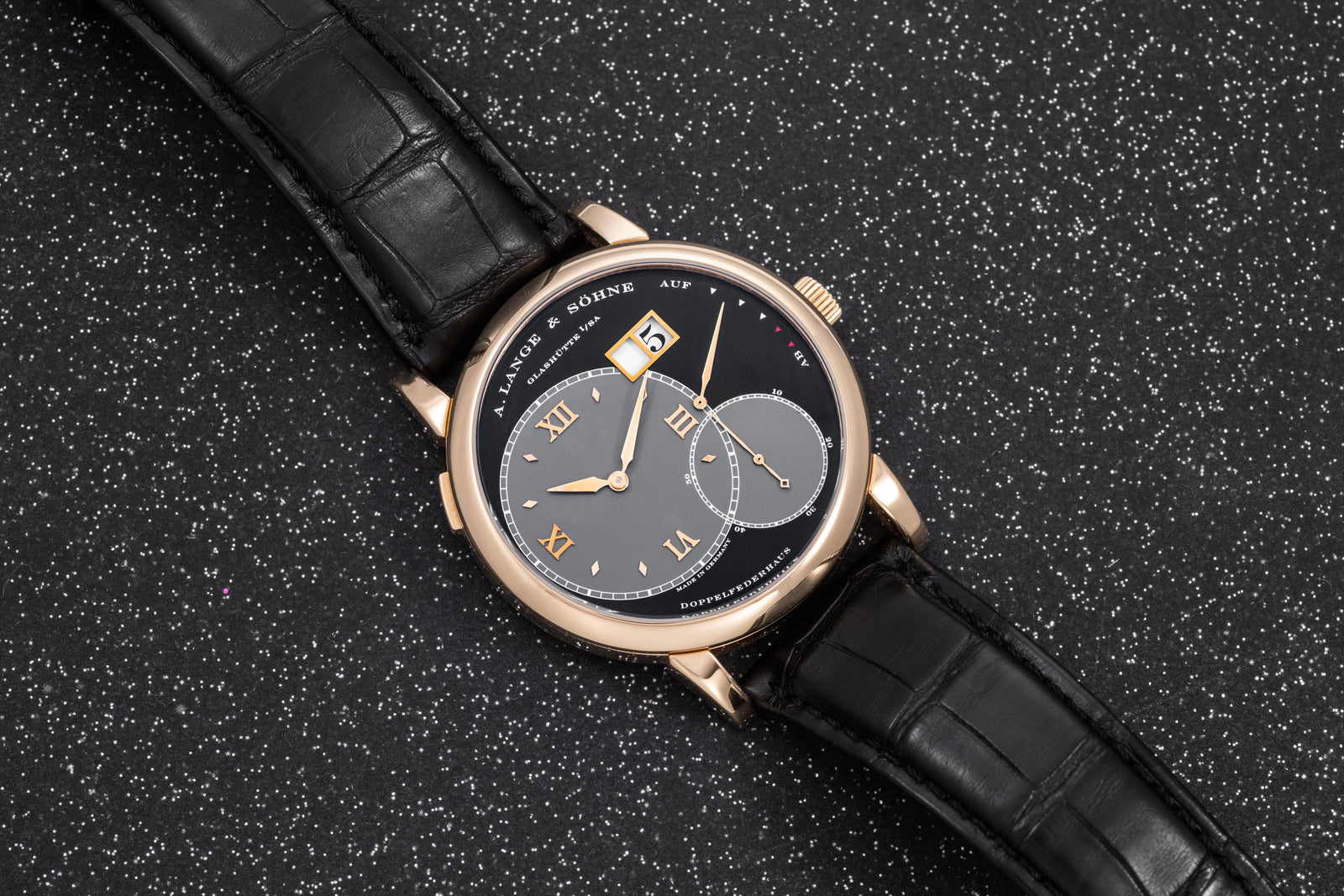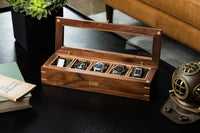Heuer Bundeswehr 'Sternzeit Reguliert'
- Soldspan>
- Sold
Why We Love it
–
Why We Love it
–Why We Love It
Known affectionally as the “Bund,” the Heuer Bundeswehr (German for 'Federal Defense') Reference 1550SG flies high amongst military chronographs. Strapping one on your wrist can conjure daydreams of piloting a F-4 Phantom II over Soviet airspace in the midst of the Cold War
These chronographs were issued for pilots in the air forces of many nations (including the Italian Air Force, under the brand Leonidas, which Heuer acquired in the 60s) but is best-known for its use by the Luftwaffe of West Germany. From the 1960s to the 1970s, the "Bund" (as it's affectionately known) saw a range of five dial configurations that baffle those not in the know; fortunately, the Heuer experts over at On The Dash have complied a comprehensive overview of these variations, which we'll summarize here.
The first has the letters '3H' surrounded by a circle and a small 'T' over 6:00, while the second only had the '3H' symbol and no 'T'. The third has a small 'T' just over 6:00, signifying that the luminescent material is Tritium. The fourth version, has no markings at all other than the Heuer logo at 12:00. and the fifth had the words 'STERNZEIT REGULIERT' printed over the 6:00 position. It is this last and most uncommon variant that we offer here.
This variant, a Reference 1551SG SZ, 'Sternzeit Reguliert' signifies that the timepiece was regulated for sidereal time, and was issued to artillery corps for calculating true north in conjunction with a survey telescope called a theodolite, an instrument used for measurement over two axes to determine positioning over the horizon.
The example we have offer here boasts a strong case, replete with machine and hand engraved military markings on the case back and is fitted to a German made reproduction cuff strap - also known as a 'Bund strap' to collectors. The dial is in excellent condition with brilliant patina, and the Valjoux 230 manually-winding flyback chronograph movement has just undergone a full overhaul, making it ready for whatever type of military or civilian maneuvers you want to put it through!
The Heuer Story
In 1962, Jack Heuer inherited the company that his great-grandfather had founded in Saint-Imier nearly a century before.
He had already played a role in the design of some timepieces, starting with the Solunar in the late 1940s. But in 1962, the responsibility of running the company fell on his shoulders, and he found himself faced with the daunting task of safeguarding his ancestor’s legacy while at the same time forging his own. His chosen path? Moving into a line of technical instruments for use in sporting and transportation applications.
The Heuer name was not unknown in motor racing and aviation circles. Starting in 1911, when the sport of automobile racing was still in its infancy, the company produced dashboard clocks for cars, boats, and even airplanes. Jack Heuer, a longtime racing aficionado, saw an opportunity to revitalize—or at the very least reexamine—the company’s already-successful line of chronographs.
He had first tried his hand with the Autavia, which at the time of his succession was a stopwatch with a virtually illegible dial. In its place he launched the line of Autavia wrist chronographs, the first line of chronographs produced by Heuer to be named, not just numbered. The Autavia was purpose-built for racers and pilots, and attracted the attention of Formula 1 racers and devotees such as Jochen Rindt and Steve McQueen.
In designing the Carrera, Heuer created something that was entirely his, and is without question the chronograph that is most associated with the brand today. Heuer's obsession with legibility led to a dial design that was simpler to read than the Omega Speedmaster or the Rolex Daytona (released the same year as the Carrera). What resulted was a chronograph that gave only the most necessary bits of information, with plain baton markers: clean, uncluttered, undeniably attractive.
The brand grew to become a powerhouse in chronographs in particular, and the list of famous designs from the 1960s and 1970s can’t be counted on two hands. Falling on hard times in the wake of the Quartz Crisis, Heuer was ultimately purchased by Technique Avant Garde (TAG) and subsequently Louis Vuitton Moet Hennessey, who have brought the brand into the modern age
A:S Guarantee
+
A:S Guarantee
+Our Pledge
Analog:Shift stands behind the authenticity of our products in perpetuity.
Condition
Since our pieces are vintage or pre-owned, please expect wear & patina from usage and age. Please read each item description and examine all product images.
Warranty
We back each Analog:Shift vintage timepiece with a one-year mechanical warranty from the date of purchase.
International Buyers
Please contact us prior to purchase for additional details on shipping and payment options.
Shipping & Returns
+
Shipping & Returns
+All of our watches include complementary insured shipping within the 50 states.
Most of our products are on hand and will ship directly from our headquarters in New York City. In some cases, watches will be shipped directly from one of our authorized partners.
We generally ship our products via FedEx, fully insured, within 5 business days of purchase. An adult signature is required for receipt of all packages for insurance purposes. Expedited shipping is available at an additional cost. We are also happy to hand deliver your purchase in Manhattan or you may pick it up at our showroom.
Returns must be sent overnight or by priority international delivery, fully insured and paid for by the customer. A restocking fee may apply. Watches must be returned in the same condition as initially shipped.
We welcome international buyers, please contact us prior to purchase for additional details on shipping and payment options.








Heuer Bundeswehr 'Sternzeit Reguliert'
- Soldspan>
- Sold


